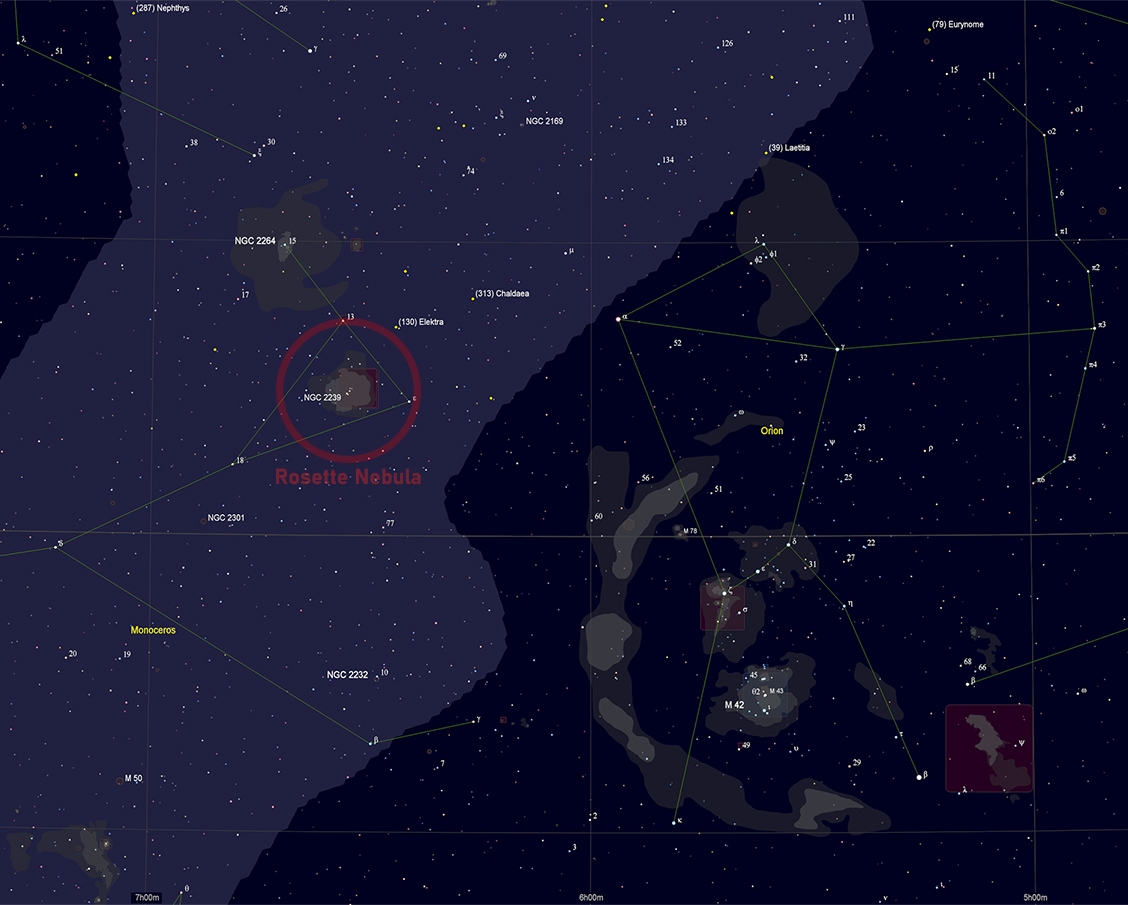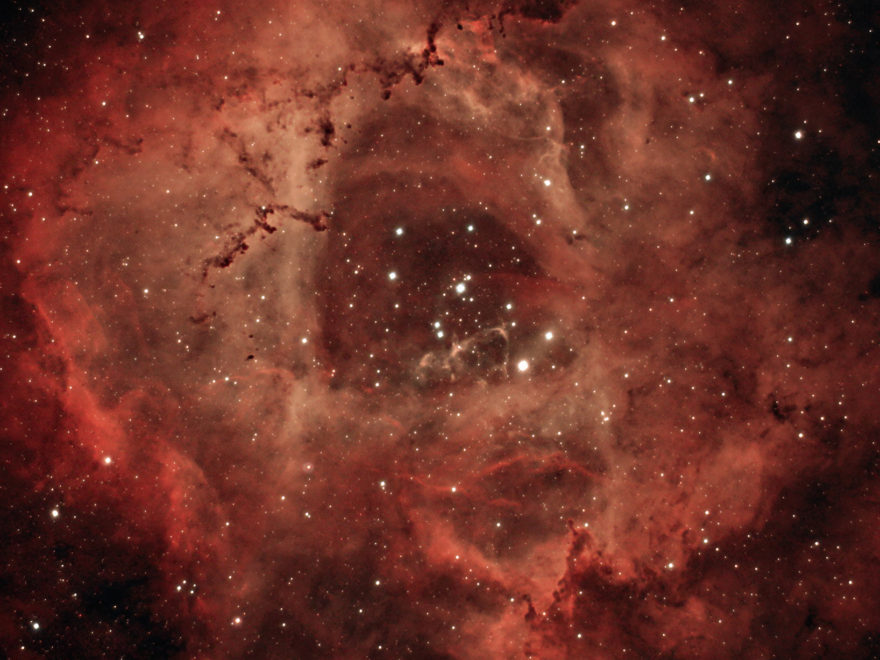With the return of clear skies to Georgia late last week I was able to image one of winter’s finest astrophotography targets, the Rosette Nebula. Located just west of Orion in the constellation Monoceros, the nebula has been catalogued as Caldwell 49 along with several NGC designations – 2237, 2238, 2239 and 2246.

Rosette is a very large emission nebula that spans 130 light years. At a distance of 5,000 light years from Earth, the apparent size of the nebula is larger than the full moon.

Despite this large size the nebula cannot be seen with the naked eye. Even with a large telescope it can be difficult to see without the use of an O-III or UHC filter. As is the case with nearly all objects in the night sky, the cones in the human eye that detect color do not work very well under low light conditions. Instead of color you see shades of gray. The magnificent red and pink colors in the Rosette Nebula can only be seen when captured with a camera.

Date of capture: 19 & 20 February 2021
Telescope: Explore Scientific ED80 APO Triplet Refractor with a Televue TRF-2008 reducer/flattener
Focal length: 384mm
Mount: Orion Atlas Pro AZ/EQ-G
Camera: ZWO ASI294MC Pro
Filter: Optolong L-Extreme
Exposure: 4 hours (180 seconds x 80)
Capture software: Astro Photography Tool
Processing software: DeepSkyStacker and Photoshop (plugins: ProDigital Software Astronomy Tools, Topaz DeNoise AI)

